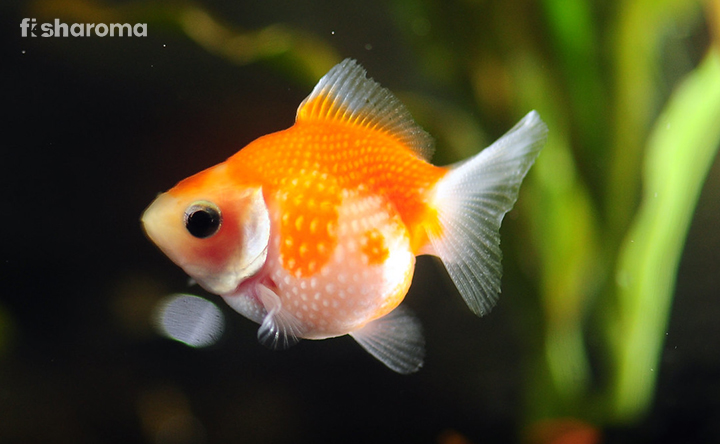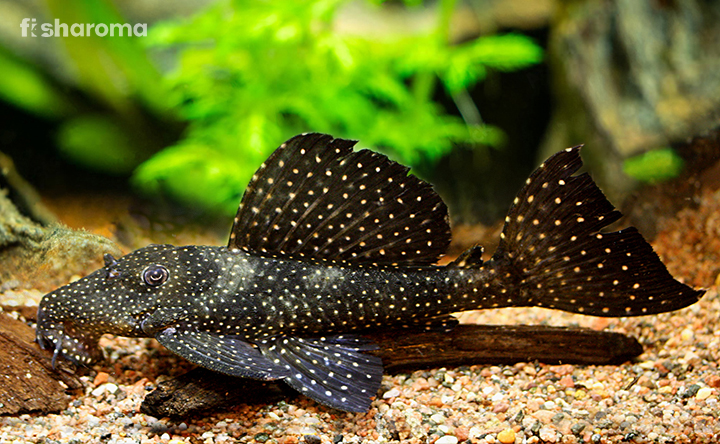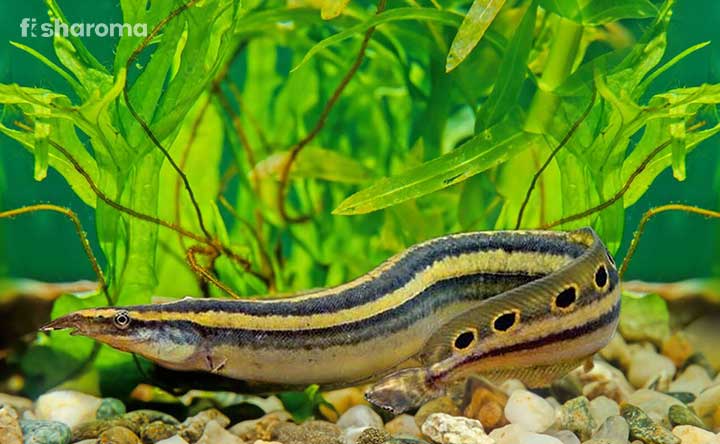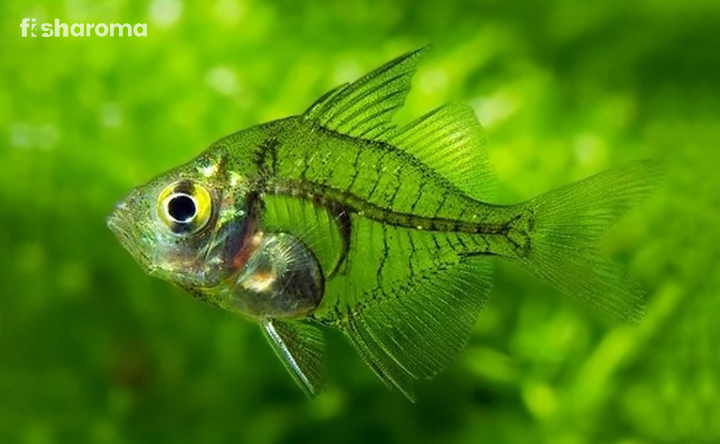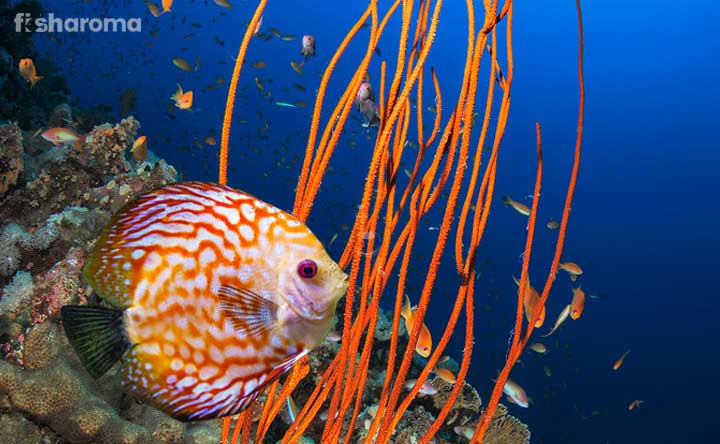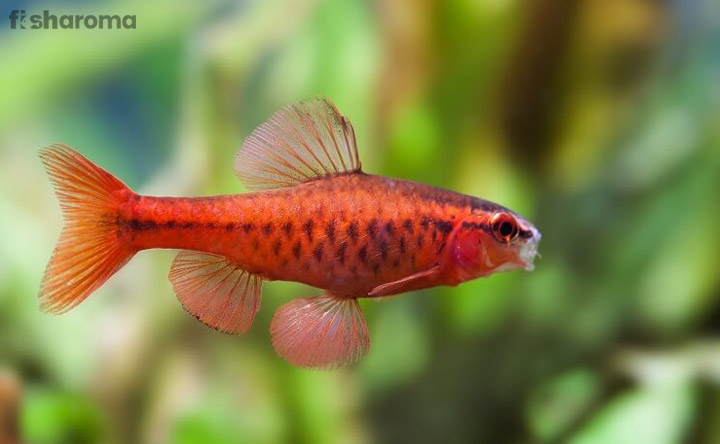Yoyo Loach Complete Care Guide – Size, Color, Foods, and More
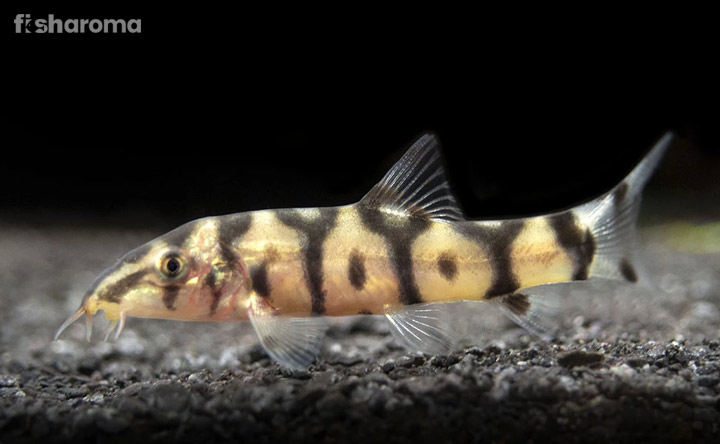
- Origin and Habitat of Yoyo Loach
- Appearance of Yoyo Loach
- Behavior of Yoyo Loach
- Lifespan of Yoyo Loach
- Diet of Yoyo Loach
- Tank Requirements of Yoyo Loach
- Water Type for Yoyo Loach
- Compatibility of Yoyo Loach
- Breeding of Yoyo Loach
- Common Diseases of Yoyo Loach
- Difficulties in Petting the Yoyo Loach
- Summary
Keeping a fish in freshwater aquarium whose name is written on their back is definitely a rarity, but Yoyo Loach will be able to give you this exceptional experience. They are small fish that remain busy the entire day and bounce like the yo-yo toys. These two are the probable reasons behind their name.
Well, whatever the history behind their name is, this freshwater fish will attract you at once with their appearance and nature. Probably this is why the demand for this fish is sky-high. You will need a little experience to handle this fish. Go through this care guide and prepare yourself to pet this fish.
Key Specifications of Yoyo Loach
Take a quick look at the quick details of Yoyo Loach:
| Scientific Name | Botia almorhae |
| Family | Botiidae |
| Origin | Pakistan |
| Size | Maximum 2.5” (6.35cm) |
| Color | Black patterns of Y and O shape in silver body |
| Care Level | Intermediate |
| Lifespan | 5-8 years |
| Temperament | Generally peaceful but semi-aggressive at times |
| Compatibility | Moderate |
| Tank Size | 20-gallons |
| Diet | Omnivore |
Overview
They are also known as Almorha Loach, Lohachata Botia Loach, Y–Loach, and Reticulated Loach. In 1920, Narayan Rao first described this species. Photographer Ken Childs first noticed this fish bounce quickly up to the mid-level and go back to the lower level of water in their natural habitat that resembles the yo-yo toys. The juvenile fish are seen to have more prominent YOYO patterns in their bodies in comparison to the old ones. The attraction of Yoyo Loach is mainly because of these patterns in their body.
Origin and Habitat of Yoyo Loach
This fish is available in large numbers in Pakistan, and due to this reason, they have got the name, Pakistani Loach. It can also be found in the origin of the Ganges in India. Also, it is available in Bangladesh and Nepal. It is mainly a South-East Asian fish, but due to different breeding technologies, it is now found in entire Asia and some Middle East countries.
Appearance of Yoyo Loach
Due to the patterns of their bodies, it often looks like a giraffe, and due to the combination of white and black, it looks like a zebra. For a long time in the past, they were claimed to be a scale-less fish, but later a closer look to the fish revealed that their fine scales are embedded in their skin and that’s why they appear scale-less.
Due to their slender body and almost translucent scales, the patterns are more visible. Females have a chubby structure in general. They have four pairs of barbels, and their translucent caudal fin is in forked shape.
Yoyo Loach has a hidden spine under their eyes which cannot be seen from outside. It is very sharp, and in their natural habitat, it is used to protect them from their enemies. In an aquarium, this fish can use the hidden spine under stress.
Size of Yoyo Loach
In the natural habitat, they are found almost 6” (15.25cm), but in captivity, they grow only 2.5” (6.35cm).
Color of Yoyo Loach
They are bright silver and the YOYO pattern is in black color which gives a stunning look to the fish. In some parts of the body, this black color turns into a bluish gradient, especially towards the edges which enhances their looks. On the silver body, small black dots can be found.
Yoyo Loaches of Pakistan have a darker tone in comparison to the Indian ones, and it is probably because of the weather. Experts have not yet given their opinions about the different types.
Behavior of Yoyo Loach
They are generally considered as peaceful fish and don’t prefer to mess with tank decors or tank mates. They are among the forever hungry and always energetic fish. Their aggression will be seen only if they come across other aggressive or semi-aggressive fish. Yoyo Loach is very comfortable within own group and they mostly never bully each other if kept in even numbers.
Lifespan of Yoyo Loach
They generally live for 5-8 years. On average, with proper foods, tank and water conditions, this fish will survive up to 7 years in aquariums.
Diet of Yoyo Loach
Being omnivorous, you can feed your Yoyo Loach a diverse diet and help them to grow healthy. You can feed them any store brought flakes or pellets (not every day), dried or cooked meals along with live foods to see them more energetic. They spend most of the day at the bottom to the mid-level of the aquarium, so you should feed fast-sinking foods to them.
Following are the food options for Yoyo Loach:
- Snails
- Daphnia
- Mosquito larvae
- Blackworms
- Tubifex
- Mysis
- Brine Shrimp
- Bloodworms
- Small insects
Snails are their most preferred foods, and Yoyo Loaches suck the meaty substance of snails from their shells.
Along with these, it is advised not to skip the plant materials from their diet completely. However, the quantity of plant and algae substitutes needs to be less as they scrape algae from the aquarium most of the time, which may not be nutritious. You can use Hikari Sinking Wafers for this purpose. You can feed some vegetables once a week to this fish.
- You can target different places in the aquarium base to drop the food to see their excitement.
- Feed them during the night as they are nocturnal fish.
Tank Requirements of Yoyo Loach
Typical adjustments in the tank are required though they can tolerate a few exceptions.
Tank Size
This fish tends to be stressed in small aquariums. So, it will be better to get large ones for them where they will get enough place to swim and continue their sports.
When they are young, you can select a 20-gallons tank for five Yoyo Loaches, but once they are grown, you have to upgrade it to a 40-gallon tank. If you want to keep more than five, you need to select larger tanks. You can see the visible changes in their nature and activities after upgrading to larger tanks.
Roughly, one single adult fish needs approximately a 15-gallon tank, and you can select the size of the tank according to the number of fish you are planning to keep.
Tank Lid
They are known for their bounces, but they bounce from the bottom to the middle of the aquarium. There is hardly any chance of this fish to go out of the tank, but for safety, a tight lid is required.
Substrate
River beds (which are mostly rocky areas) are the original habitat of this fish; you can use outdoor gravels as substrate. Small to medium rocks along with large pieces of blunt rocks and sands can be used in the tanks of Yoyo Loach. Make sure whatever stones you are adding, they don’t have any sharp edges since that can damage their fins or barbels.
Some fish keepers prefer soft substrate with sand so that it becomes easier for the fish to dig holes, and the hard substrate will damage their barbels.
Aquatic Plants
If you don’t want to use the aquarium lids, you can secure the fish by placing some floating aquatic plants. Water Spangles and Duckweed will serve the purpose. Yoyo Loaches generally do not eat up the plants, but it will help them to have a natural ambience in the aquarium.
Filter
As they dig holes, the substrate can pollute the water. Therefore, strong filters are needed. You can use the under gravel filters to keep the tank water clean. Along with that, a canister filter will also be alright for this tank which will allow you to provide gentle to moderate current (generally preferred by Yoyo Loach) in the aquarium.
This fish is originally found in the origin of the rivers and river bends where the water is extremely fresh. In order to replicate that, oxygen supply has to be adequate here. For this reason, water needs to be clean, so you cannot skip the filters.
Lighting
Any mild lighting is suitable for them. Make sure the light is not glaring or flashy.
Décor
This fish prefers to rest under the bogwood. Also, they love their privacy, which means the addition of caves will be good. By using the PVC pipes, you can make the caves for them. If you are using large rocks for decorating, skip the caves because they sometimes get stuck there.
Water Type for Yoyo Loach
Keeping the water clean is mandatory for this fish as they belong to such areas where water is usually clean and fresh. Take a look at the water adjustment guidelines.
Temperature
This fish can be kept at 75-86°F (23-30°C). The ideal temperature for them is 76-82°F (22-27.7°C) and 86°F (30°C) is the highest tolerant level for this fish.
pH Level
pH level has to be between 6.5-7.5. This species prefers slightly acidic water, and you have to be very careful with this. Mismatch in pH level will lead to their stress.
Hardness
Adjust the hardness level to 3-10 dGH for this fish.
Nitrate Level
It is generally claimed to be a hardy fish, but higher nitrate levels can be dangerous for them. So, try to reduce the level of nitrate to zero.
Cleaning Methods
You need to be extra careful at the time of cleaning. Clean the gravels using readymade solutions. As these fish are the bottom dwellers, there are high chances of food particles getting stuck in the substrates which can pollute the water. Be extra careful at the time of cleaning the substrates.
Replacement Procedure
It will be good to change 20% of the water each week. If that is not possible, you can change 30% of the tank water every 15 days.
Compatibility of Yoyo Loach
Keeping more than one Yoyo Loach in the same tank will never be a problem, and they prefer to stay in their own group. Keep them in even numbers so that they can make a pair and the chances of dominating the odd one will be negligible. It gets socialized easily, but it can bully the younger fish of its community, so make sure all the fish of the group are of the same age.
Suitable Tank Mates of Yoyo Loach
If you are keeping one single Yoyo Loach, it can team up with other peaceful fish. You will get a wide variety of tank mates for this. This fish is generally peaceful until and unless any aggressive fish attacks it.
Same sized fish or the smaller ones are considered to be the ideal tank mates of this fish. The following ones are considered to be the most suitable tank mates of Yoyo Loach:
- Angelfish
- African Cichlid
- Goldfish
- Glass Catfish
- Corydoras
- Tetras
- Clown Loach
- Kribensis
- Bristlenose Pleco
- Molies
- Catfish
It is not that your Yoyo Loach will never have a fight with the aforementioned species, but these mock fights will never be the serious ones that can end up in injuries. These will stay harmoniously in an aquarium because Yoyo Loaches will spend most of their days in the hiding places and will be active after evening and most of these tank mates have an opposite routine. So, there is a minimum chance of a mess.
Unsuitable Tank Mates of Yoyo Loach
The extremely aggressive species are to be avoided as the Yoyo Loach will be stressed, and they will probably refuse to intake food. There is a chance that they will hide the entire day in the caves or hiding places. The long-finned fish and slow swimming ones are also restricted to be kept with this fish because Yoyo Loaches can damage their fins and tails out of aggression. Take a look at their unsuitable mates:
- Peacock Bass
- Jack Dempsey
- Red Finned Sharks
- Tiger Barbs
- Oscar Fish
- Tiger Fish
- Bettas
- Snails
- Shrimps
Breeding of Yoyo Loach
There is still no evidence of successful captive breeding of this fish. However, it is completely natural to see plumpy females with eggs even if they are not bred in the aquarium. The large fish farms are also trying to breed Yoyo Loaches, but they are facing trouble in doing that too.
Common Diseases of Yoyo Loach
Yoyo Loach is very likely to catch a disease due to its extremely small, fine and delicate scales. It indeed becomes twice difficult to observe small changes in scale color or scale reddening because of the shape. But you don’t have other options apart from observing the fish and routine checking of water. You can go through the common diseases along with their symptoms, causes, and remedies which are mentioned below.
1. Ich or White Spot Disease
It is a parasitic (Ichthyophthirius multifiliis) disease among the Yoyo Loaches and also among most of the aquarium fish. After the parasitic attack, the scales, fins, and tails are seen to have small white spots and parts of the fins can be turned red. The fish will try to scratch its body on the substrates, and it will refuse to eat.
Please take experts’ advice to cure this because the treatment of other fish and Yoyo Loach is completely different due to their structural differences. You can temporarily heal the fish by increasing the temperature of the tank water and using aquarium salt.
2. Skinny disease
Internal parasites are responsible for this disease in Yoyo Loach. That parasite absorbs the nutrients and gets healthy, and on the other side, the fish itself turns pale and skinny. Detecting it in the early stages will be better to cure the fish because excess growth of the parasite can even kill the fish too. You can provide healthy food along with medicines that will suppress the growth of the parasite in the fish.
Difficulties in Petting Yoyo Loach
It is not very difficult to handle this fish because it adapts to the captive life easily and quickly. Also, it can tolerate little exceptions in water and tank adjustments, but extreme conditions should be avoided. Fish keepers with two or more years of experience can keep it very easily because strict water parameters are required for this one.
Summary
Yoyo Loach is a sensitive fish, and you cannot compromise its foods, tank and water requirements. In case you compromise these factors, your fish will look dull and pale. But the good aspect is that in case you maintain all their requirements properly, you will see their colors getting intensified. So, if you want to be an active fish keeper who wants to fulfill all the requirements of the fish accordingly, Yoyo Loach is meant for you. But, if you tend to reschedule water changing or tank cleaning dates, you need to take your time and prepare yourself before getting a Yoyo Loach.
Interesting Facts About Yoyo Loach
- In the natural habitats, Yoyo Loach is a scavenger, and they have an extraordinary contribution to maintain the ecosystem.
- During fights, the black patterns fade into grey or white, which come back to normal as soon the fight ends.
- At the time of feeding, they make clicking sound by inhaling air and forcing that air into the gills.
Some More Freshwater Fish You May Be Interested In
You can go through the care guide of some other freshwater fish which will make your aquarium even more beautiful
Jack Dempsey: Know about the foods, tank requirements and breeding of a shiny fish – Jack Dempsey.
Clown Loach: Boost up your hobby of fish keeping and go through the care guide of this playful pet fish.
Glass Catfish: Get a strikingly beautiful pet fish in your freshwater aquarium with Glass Catfish and know how to handle them.


